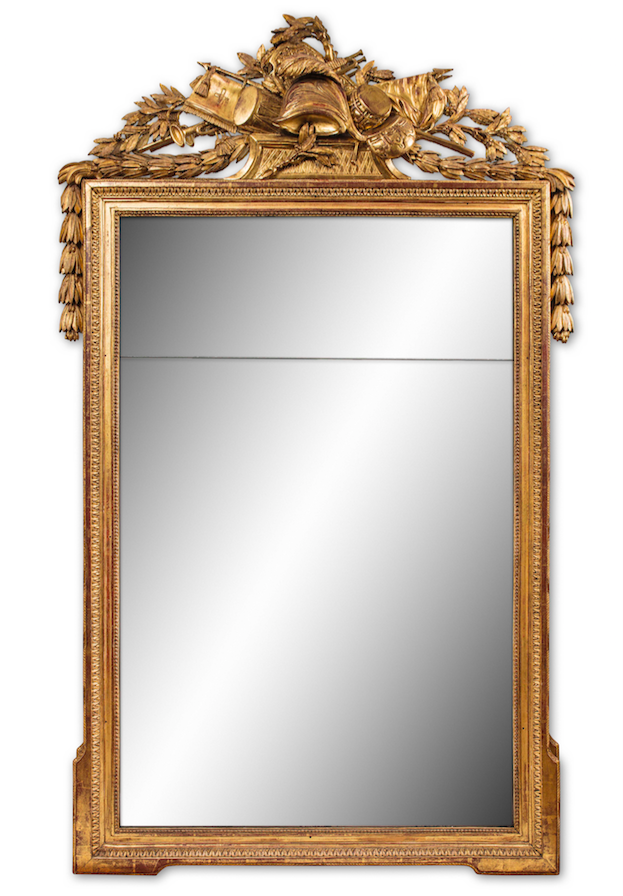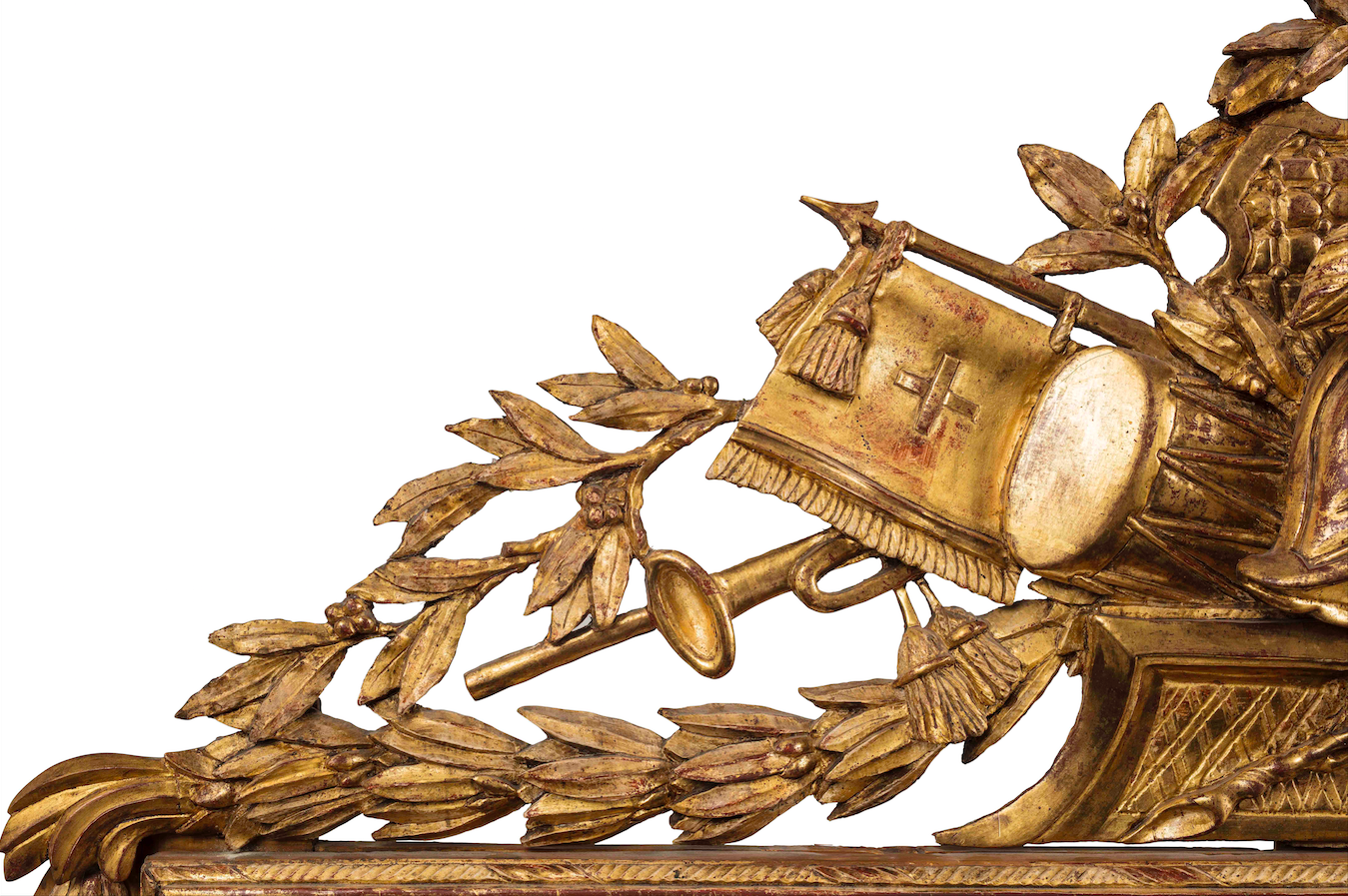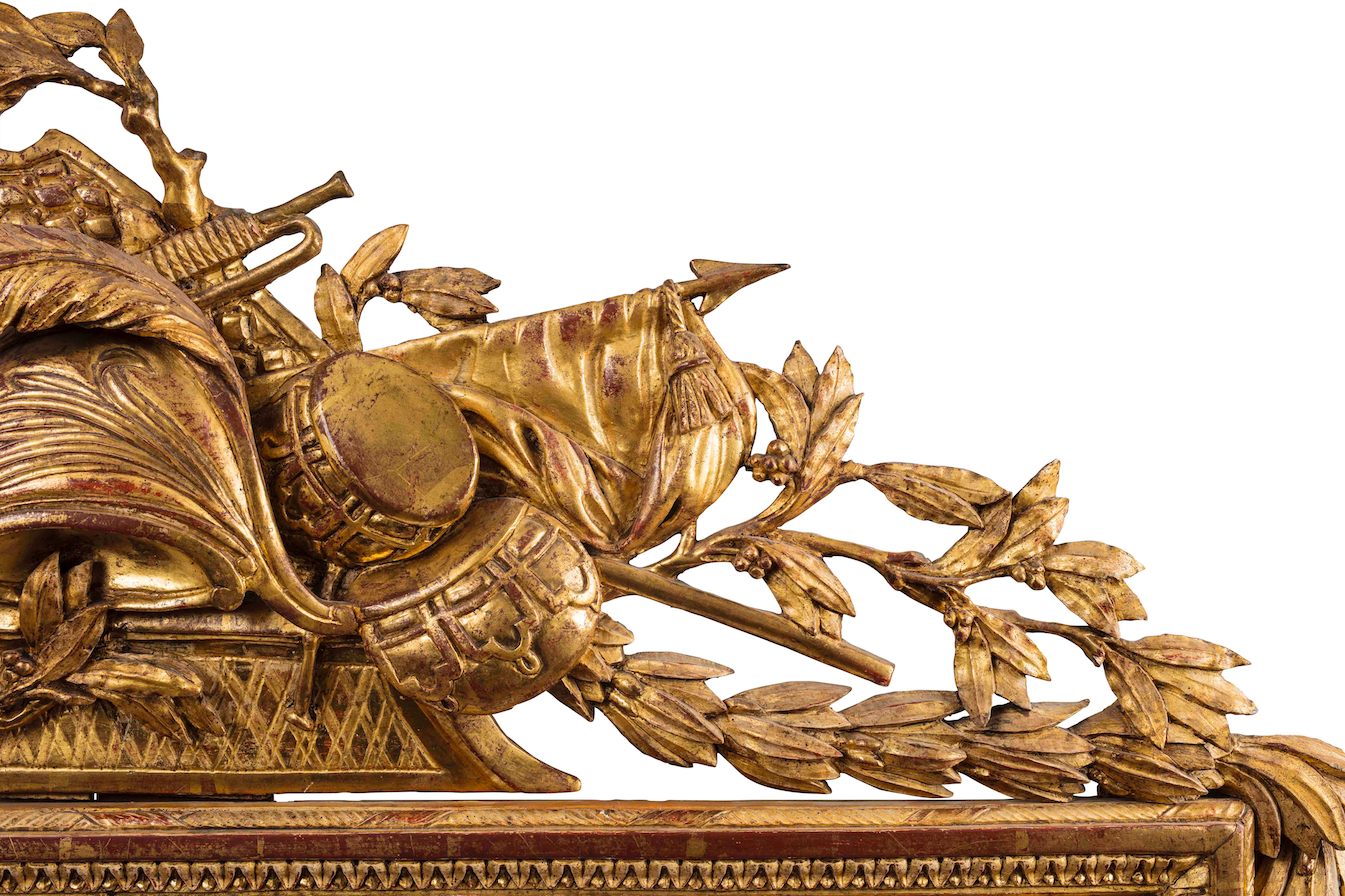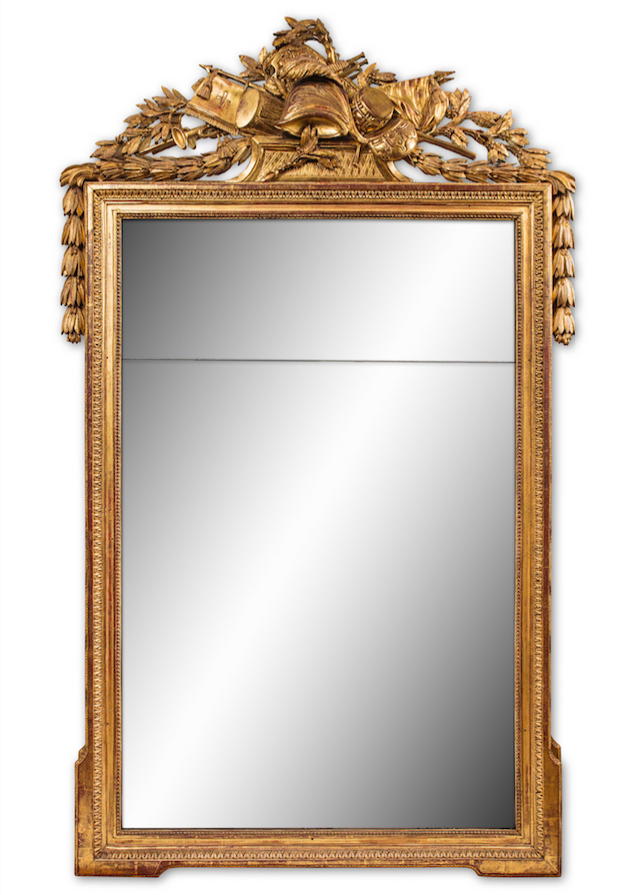18th Century Wall Mirror (SOLD)
An important six-foot-tall overmantel mirror in sculpted and partially re-gilded wood, from the late Louis XVI period. The front pediment is comprised of military motifs: flags, trumpets, arrows, and sprigs of laurel. Neoclassical friezes of heart spokes and pearls border the original glass. (The military pediment atop mirrors such as this is the second rarest type encountered, after pediments stylized with scientific instruments and before ones featuring musical instruments).
The divided pane is a sign of authenticity and is consistent with 18th century production techniques. Tall mirrors with divided panes are on display in various museums such as Thomas Jefferson's Monticello and the Chateau de Versailles.
Tall Gilt Wood Mirrors such as these were first used by the French to enhance interiors by reflecting candle- light and daylight. Generally long and tall, pier mirrors or “trumeau” mirrors were meant for the spaces along the wall between windows, or above an overmantel. Jefferson admired what he had seen in France and along with building larger windows, incorporating these pieces into his interiors was part of his redesign scheme for Monticello. The panes of the mirrors are divided because 18th century manufacturers could only produce sheets of glass up to a certain size.
H: 73 in. L: 46.5 in.
Myers & Monroe, LLC



